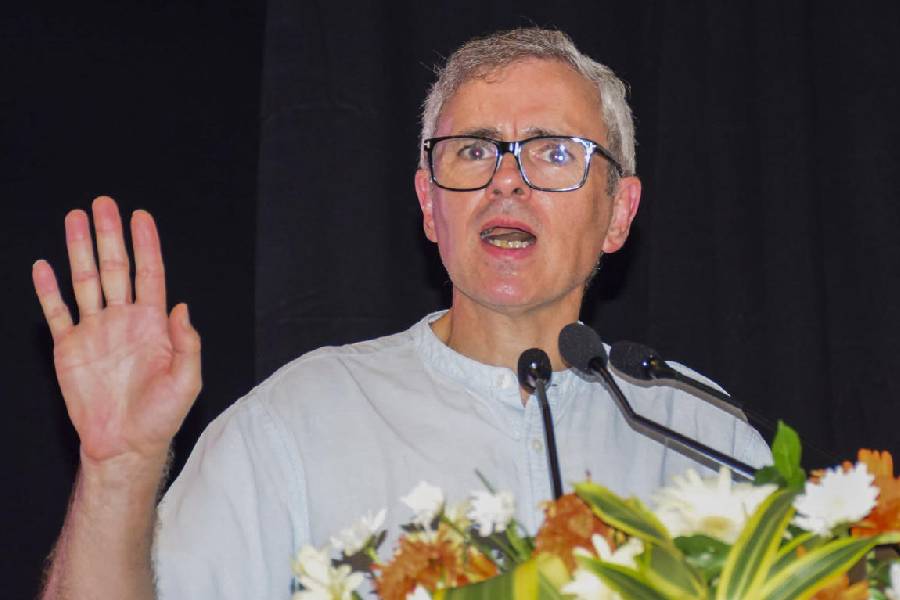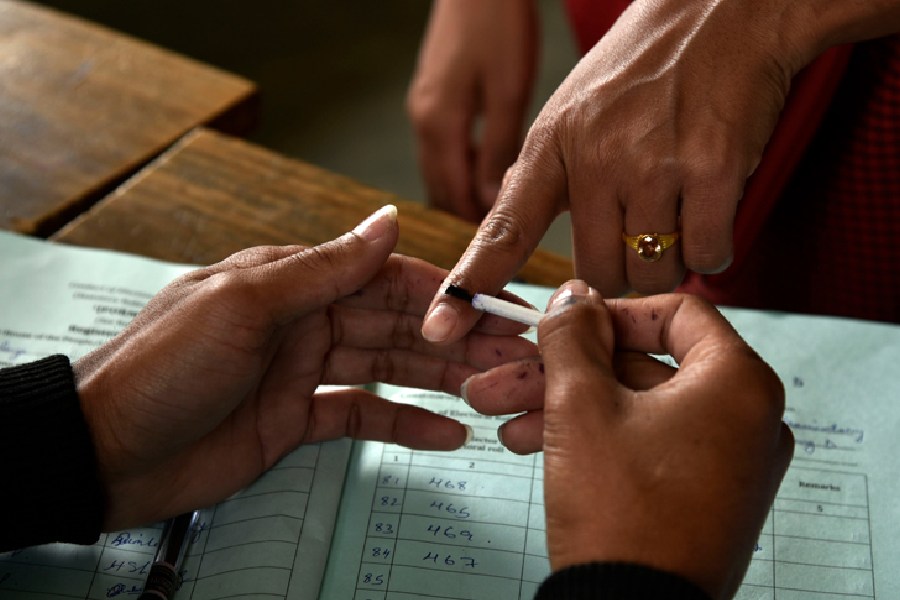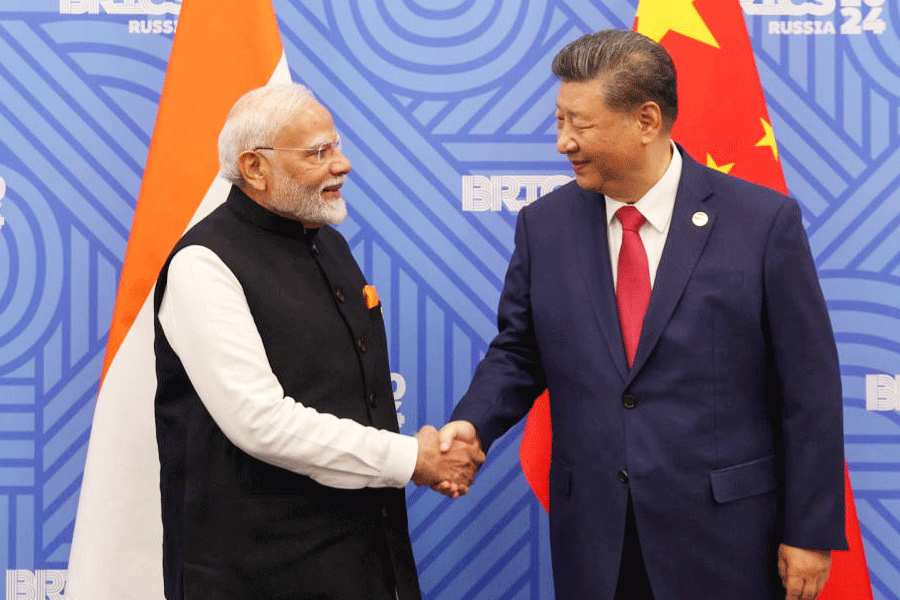 |
| (From extreme left) David Abraham and Rakesh Thakore create unstructured garments in khadi; Sabyasachi Mukherjee is all for fitted silhouettes in khadi; Anju Modi’s khadi palazzo pants and jackets are a hit in India and abroad; Short, cropped khadi jackets by Parvesh Kumar and Jai Singh come in bright colours; Madhu Jain designs khadi lines for both men and women |
It was once a metaphor for the freedom movement. Today, it’s haute couture, the preferred fabric for designer bridalwear, a fabric for chic resortwear. And no, khadi is not coarse or sack-like, nor is it oh-so-yesterday. Khadi is being reinterpreted in the ways that it’s being woven and designed.
So, from fine khadi saris to trendy Indo-westernwear, the fabric has got a massive makeover. Today, designer stores are stocking up on knee-length khadi jackets, khadi palazzo pants and loungewear replete with sarongs and pajamas, asymmetric kurtas and everything in-between. It’s everywhere — on the ramp, the red carpet and even Bollywood movies. Aishwarya Rai wore it in Raavan and Guzaarish and Vidya Balan in Paa. Khadi has arrived — and how!
Some years ago, ace designer Sabyasachi Mukherjee created an entire collection of 90 bridal lehengas in khadi. The collection — priced between Rs 65,000 and Rs 3 lakh — was designed in organic khadi, was vegetable-dyed and zardosi-embellished. It was an instant sellout.
Says Mukherjee, who has since worked extensively with khadi: “It’s a myth that khadi cannot be considered a luxe or expensive fabric. Since the perception about khadi has been changing over the years, it’s being revived and fine-tuned to become a top-class fabric.”
 |
 |
| (From top) Manoj Chaturvedi’s Sarvodaya Ashram Trust in Etah manufactures khadi that varies from coarse to very fine; Ritu Kumar’s collections are designed using distressed and stonewashed khadi |
Adds designer Madhu Jain: “There’s been a huge revival of khadi and almost every designer is working with it today.” The prices for Jain’s khadi range start at Rs 3,500. Jain, who has been rooting for khadi and bamboo fabrics, painstakingly restored a khadi sari woven by Jawaharlal Nehru in prison in 1941. Maneka Gandhi wore it for her son, Varun Gandhi’s wedding.
“The fact that khadi continues to be handcrafted and handspun adds to its mystique,’’ says author and revivalist Rta Kapur Chishti, who set up Ananda Delhi Textiles in 1979 to develop ikat weaves and to support indigo dyeing and indigo printing techniques.
“The handspun variety is valued by those who know and understand handspun and hand-woven fabrics. It’s superior in texture and softness to other varieties of khadi,” says Chishti. Handspun khadi, unlike mill-produced fabrics, becomes more supple with every wash, she says. Moreover, khadi’s unique thermal effect lends it warmth in winter and makes it a cool summer fabric.
And it’s by no means inexpensive. Top quality khadi, which is soft and has a high thread-count, retails for anything between Rs 1,000 and Rs 1,500 per metre. And depending on where it is woven, the prices of khadi vary. So, the khadi woven in Andhra Pradesh, for instance, is priced higher than that produced in Orissa, as it is finer.
Fab factor
Khadi’s appeal can be gauged by the fact that an increasing number of designers are crafting entire collections with it.
What really works for khadi, they feel, is its texture. But because it does not hold its shape, it’s not suitable for fitted silhouettes. “Unstructured garments work better with khadi,” says David Abraham of Abraham & Thakore. Mukherjee though differs from Abraham. He says: “The silhouette could be a fitted one.”
Designer Anju Modi, who works on khadi sourced from Andhra Pradesh, West Bengal and the government-run Khadi Gramudyog, loves the way the fabric soaks up colour: “Vegetable dyes and indigo colour get a lot of depth on khadi.” Modi’s khadi Indo-westernwear sells briskly in India, US and Europe. Her khadi palazzo pants teamed with long jackets retail for anything between Rs 10,000 and Rs 18,000 and are doing very well this season.
A khadi fan for decades, designer Ritu Kumar is currently working on her summer line that features tunics and trousers in khadi. She says: “Khadi works better generally in tunics and simpler shapes as it does not fall well in bias cuts (diagonal cuts).” It’s a super fabric for saris, she says, with its fall and drape.
khadi also has a breathability which works in its favour. Nida Mahmood, best-known for her kitschy designs, loves using khadi in her collections. She says: “Khadi breathes, which makes it a green fabric.” Her latest khadi collection incorporates embroidered tops, cut-sleeve jackets and high-waisted bottoms. Mahmood says: “Khadi has received a huge facelift in recent years.”
Chishti, who works with weavers to produce khadi for fashion designers, adds: “Any garment that requires draping looks good in khadi. Also, layered garments in two different colours also work well in khadi.” A few years ago Chishti had positioned the fabric as a high profile one in an exhibition titled, Khadi — The Fabric of Freedom, which showcased 108 different types of khadi woven in nine Indian states.
Designers Parvesh Kumar Sharma and Jai Prakash Singh first designed a modern loungewear line in khadi, Diana meets Gandhi, in 2010. Their label, Parvesh Jai, offers loungewear between Rs 5,500 and Rs 16,000.
Says Singh: “For a holiday, people look for clothes which are comfortable, have great texture and are skin-friendly. The only fabrics that fit the bill are silk and khadi. Silk, however, gets spoilt in water but khadi is unaffected.”
The duo’s collection of khadi jackets is titled Kamasutra to Subconscious. Short, cropped jackets come embellished with sequins and are detailed with running stitches in bright colours. Their latest collection, Salute to Feminity, offers lehengas and off-shoulder/ backless gowns with Victorian silhouettes in khadi. These are priced between Rs 18,000 and Rs 2.5 lakh while the lehengas are tagged between Rs 45,000 and Rs 4 lakh.
But despite khadi’s makeover, it’s difficult to divorce it from its origins. Abraham says: “Its history, and the fact that it’s hand-woven and handspun, gives it a romantic appeal. Our young clients who don’t connect with khadi in its historical context, see it as a trendy, new fabric.”
 |
Another factor that works in khadi’s favour is that it’s ecologically sustainable. Says Chishti: “Khadi needs to be valued as a premium product. The short-stapled (which has short threads) desi variety of khadi, which is suitable for the hand-worked charkha, is ecologically viable as it does not use pesticides. The BT cotton used by mechanised charkhas costs 10 times more than the desi variety as it needs lot of pesticides.”
Makeover mode
To make the cut as a high-end fabric, khadi has gone through a series of upgrades and improvisations over the years. To rid it of the rough and coarse feel, designers first increased the per-inch thread-count to make it soft to touch and fine to look at.
Khadi originally came with a thread-count of about 60 threads per inch — that means both lengthwise (warp) and widthwise (weft) threads. For khadi to metamorphose, the thread count had to be more than doubled. Today, most designers work on thread-counts, which vary between 120 per inch for the hand-worked, desi charkha to as high as 500 per inch for the semi-mechanised charkha.
At the Sarvodaya Ashram Trust in Etah, Uttar Pradesh, the fabric has been given multiple looks and textures. There’s the coarser khadi starting with a thread-count of 80 along with the finer versions. Additionally, the Ashram sources the finer fabric with a 500 count (it takes six months to weave 11 metres) from Bengal.
Manoj Chaturvedi, chairman of the trust that employs over 3,400 weaver women, adds: “A warm saline wash is one of the first steps towards removing the grains that accumulate during the weaving process and that make the fabric rough to touch.” The trust retails khadi collections, priced between Rs 999 and Rs 6,000, through its high-end khadi store in Delhi called Ekmatra. The colours at Ekmatra go from earthy ones to blacks and whites. For summer, Ekmatra has launched an all-white range.
Chaturvedi also puts the fabric through processes such as stonewashing and enzyme-washing. Khadi is also given a softener wash or treated with bleaching agents — depending on the kind of effect required.
Khadi yarn is also being blended with other threads to change its character. Silk helps to create silk khadi, muslin makes it soft, while cotton makes it smoother. Khadi is also blended with wool not just to make it warmer but also to add to the pliability of the material. Kumar works on khadi that has been textured, stonewashed and distressed to give it the desired finish.
The road ahead
Though khadi is in the reckoning as a Wanted fabric for summerwear, designers feel that its full potential is yet to be realised. Says Singh: “While there has been a huge revival of khadi, a lot more can be done for it.” Adds Chaturvedi: “Khadi’s USP is that it’s hand-crafted from start to finish. It needs to be valued, positioned and marketed as a premium handmade product.”
Chishti emphases that handspun khadi takes a long time to make, which to many, seems like a disadvantage. “It’s up to us how we turn this around and market khadi’s exclusivity. Not many countries will have handmade and handspun fabrics around in the coming decades — and that’s when khadi will come up trumps,” she says.










